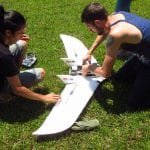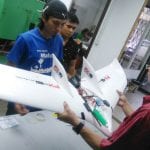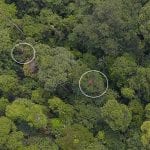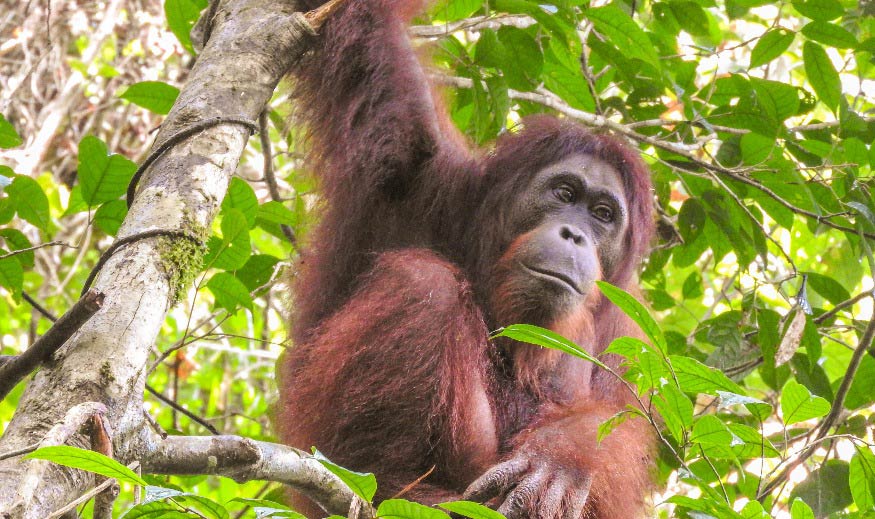
News
Researchers Need Help to Save Orangutans With Drones
The survival of Orangutans on the islands of Borneo and Sumatra, currently their only habitats worldwide, is seriously threatened.
These great apes are native to Malaysia and Indonesia but their numbers have been steadily declining for decades.
Orangutans are the most ‘arboreal’ of the great apes and spend most of their lives in trees and it is the changing use of land – destruction of their habitat from logging for palm oil extraction – as well as hunting – which is threatening the survival of the Orangutans in their last habitats.
With numbers declining by nearly 150,000 between 1999 and 2015, experts are very concerned and they believe a better understanding of Orangutans’ natural habitat might lead to land use decisions that could protect and maximise the survival chances of an already endangered species, it was reported by SBS.
According to a report published in the scientific journal Current Biology, the decline in population density was most evident in areas that were deforested or transformed for industrial agriculture.
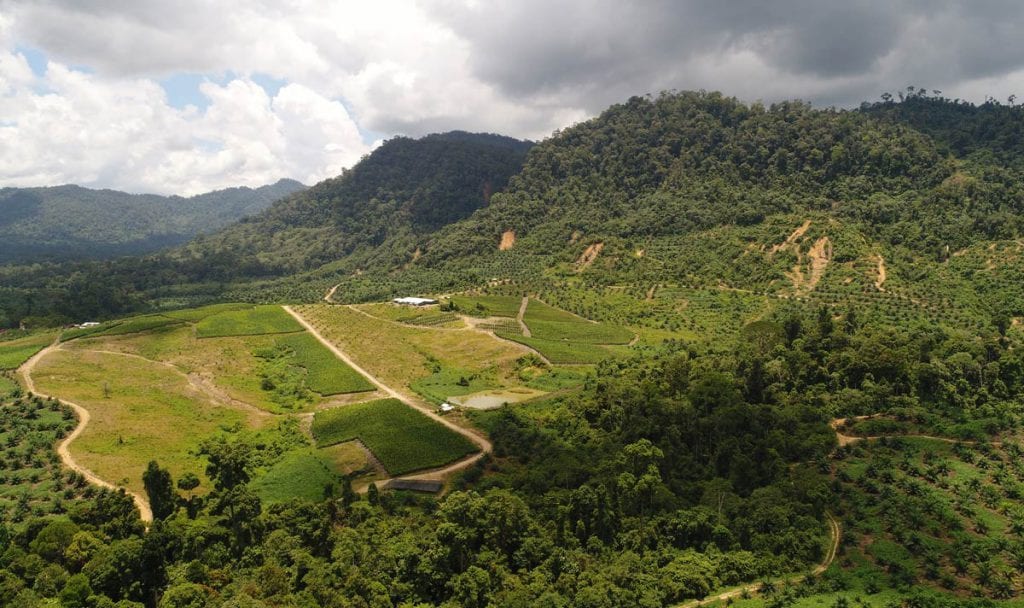
Deforestation in Borneo | Orangutan Nest Watch
Maria Voigt of Germany’s Max Planck Institute for Evolutionary Anthropology, one of 38 institutions working on the study, says however that of great concern also was that the largest number of Orangutans were lost from areas that remained forested during the study period, the implication being that many were killed; Voigt says, “the decline in population density was most severe in areas that were deforested or transformed for industrial agriculture, as orangutans struggle to live outside forest areas, the long-term study compared field surveys from 1999 to 2015 to arrive at their estimate that over 45,000 more orangutans will be lost on the island over the next 35 years due to a loss of habitat”.
The researchers say as Orangutans are a critically endangered species, protecting their remaining habitat is vital. This is no easy task however, as population densities remain unknown.
Now a new initiative called Orangutan Nest Watch has been launched whereby drone images will be used to gather data in regards to existing populations.
It will do so using Zooniverse is a global platform for people-powered research. Volunteers worldwide are being called on to assist professional researchers in gathering data, that will use UAVs to fly over an area of Forest in Sabah, Malaysian Borneo in order to find out how Orangutans are affected by human impacts on their environment.
Drones have become a vital and democratising tool for conservation & ecological research. Join the movement. #OrangutanNestWatch #CitizenScience #Tech4Wildlife #Drones4Goodhttps://t.co/zYGFGop8xX pic.twitter.com/XlJfQKdJpb
— Orangutan Nest Watch (@OrangutanSurvey) March 18, 2018
Photographic data provided by drones will help researchers allocate the orangutans nests and their vital food source the Strangler Fig trees. They say the more knowledge they have regarding the habitat Orangutans can survive in, the easier it will be to protect suitable areas of forest where they can live into the future, and thus reduce the threat of local extinction.
The North of Borneo, apart from being of extraordinary beauty, is also one of the world’s major biodiversity hotspots but a ‘highly human- modified’ landscape, with oil palm agriculture and logging has been responsible for the loss of approximately 70% of the forest.
However a recent landmark initiative by the Sabah Government has seen a commitment made to protect 30% of the state’s forest and create protected forest reserves in which wildlife may find refuge.
Led by Keeyen Pang at Hornbill Surveys, the use of drones for this survey was considered.
Hornbill Surveys is a new start-up company based in Borneo which specialises in using UVAs to carry out aerial surveys of rainforests , river systems and wildlife.
- Preparing the drone for flight | Hornbill Surveys
- Preparing the drone for flight | Hornbill Surveys
- Launching the drone | Hornbill Surveys
This makes sense as drones can take high resolution images of the forest canopy showing what kind of forest Orangutans favour and can also calibrate the number of nests in order to determine the local density of Orangutans in different forest types.
To allocate these protected areas efficiently, understanding where ecologically important umbrella species (species whose habitat requirements encompass those of a huge range of wildlife) live is important, and how their numbers vary across a range of forest types, from pristine primary forest to severely degraded secondary forest.
The focus of this survey will be on Orangutans due to their selective habitat requirements and the ability to survey for this species over large areas, as well as surveying the Strangler Fig Trees as they are an important food source to a vast number of mammals and birds, and a particular favourite with Orangutans.
There is a clear correlation between the number of Strangler Fig Trees and the density of Orangutans and fortunately these trees are very identifiable from the air.
To date surveys of orangutan nests have been carried out on foot, through dense forest, a time consuming process when large areas need to be surveyed.
Orangutans are highly intelligent, and very selective about where they choose to make their nests, so research often entailed travel by truck to remote locations where floods regularly destroys bridges that connect large tracts of forest.
Each drone survey flight results in hundreds of pictures which require careful examination to spot the orangutan nests, and the researchers are calling on the public to help!
- Can you spot the orangutan nests? | Orangutan Nest Watch
- Orangutans nests as seen from above by drone | Orangutan Nest Watch
They say “with every click” you can contribute valuable data to their project, which will enable them to estimate the local population abundance of Orangutans across a wide variety of habitat types, and lead to a better understanding of how to protect this species. Interested parties can visit Zooniverse to take part in the Orangutan Nest Watch initiative.
According to the World Wildlife Fund conservation group the species is classified as a “critically endangered” species, orangutans number around 111,000 in the wild on the islands of Sumatra and Borneo.

